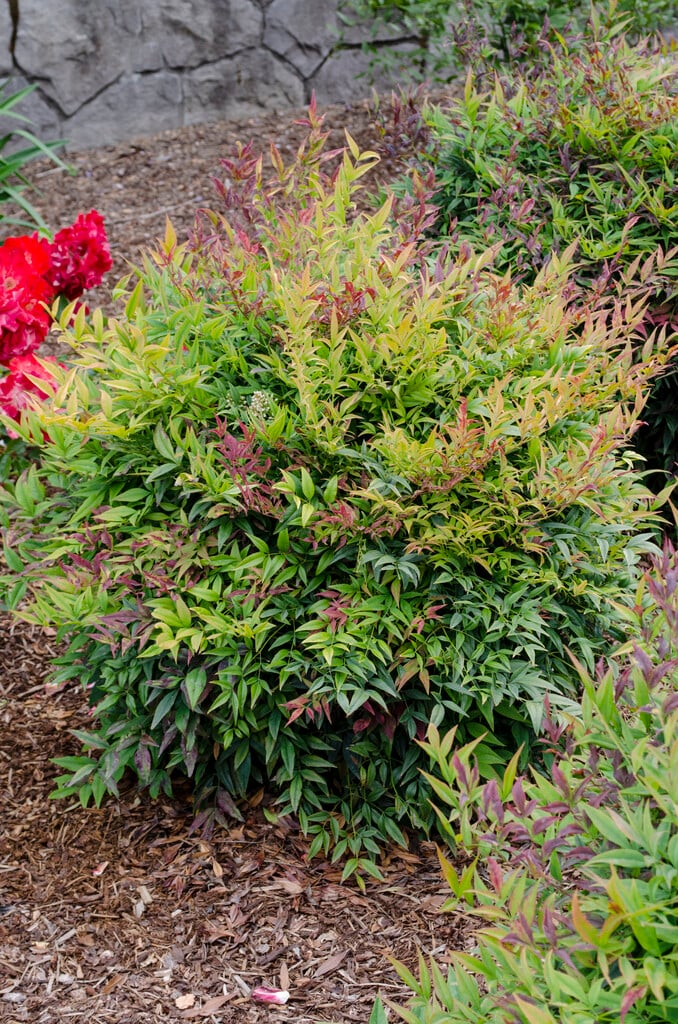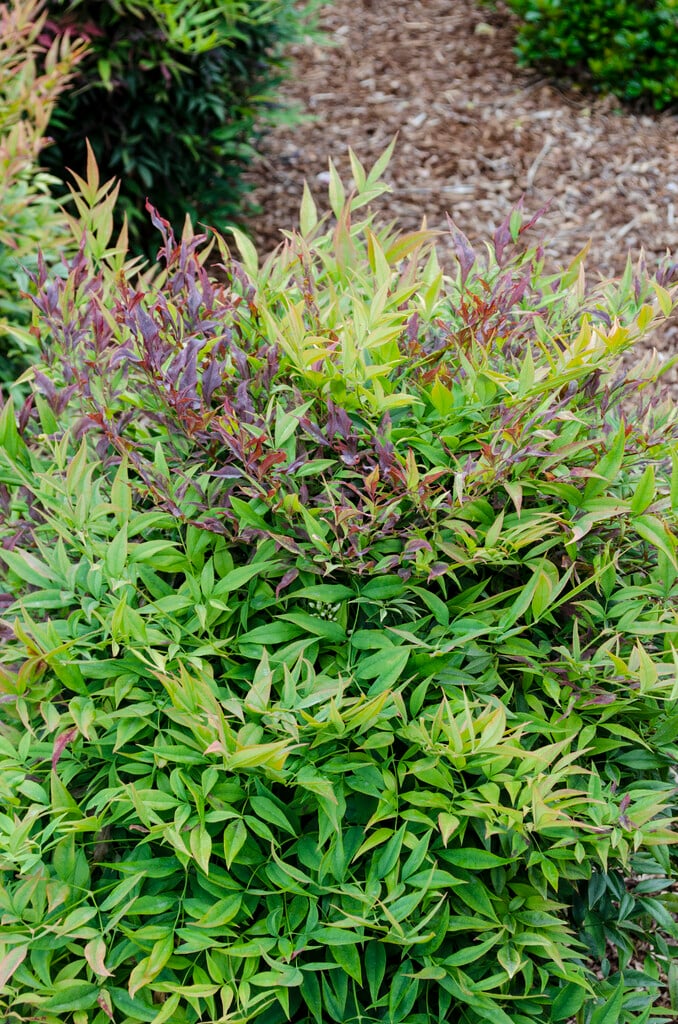Nandina domestica Sienna Sunrise ('Monfar')
heavenly bamboo [Sienna Sunrise]
A compact, leafy shrub, up to around 1.2m high, with slender, upright to arching stems and compound leaves divided into narrow leaflets. Leaves are deep red when young, and mature to green, with gold and red tints in autumn and winter. Occasionally produces small white flowers in spring
Size
Ultimate height
1–1.5 metresTime to ultimate height
10–20 yearsUltimate spread
1–1.5 metresGrowing conditions
Moisture
Moist but well–drainedpH
Acid, Alkaline, NeutralColour & scent
| Stem | Flower | Foliage | Fruit | |
| Spring | White | Red Green | ||
|---|---|---|---|---|
| Summer | Red Green | |||
| Autumn | Red Green Gold | |||
| Winter | Red Green Gold |
Position
- Full sun
- Partial shade
Aspect
South–facing or West–facing
Exposure
ShelteredDrought resistance
Yes Hardiness
H5Botanical details
- Family
- Berberidaceae
- Native to GB / Ireland
- No
- Foliage
- Evergreen or Semi evergreen
- Habit
- Bushy
- Potentially harmful
- Harmful if eaten. Wear gloves and other protective equipment when handling Pets (dogs, poultry): Harmful if eaten. For further information and contact numbers regarding pets, see the HTA guide to potentially harmful plants
- Genus
Nandina are erect, evergreen shrubs with pinnate to 3-pinnate leaves composed of lance-shaped leaflets which colour well in autumn, and panicles of small, star-shaped white flowers, followed by bright red fruits
- Name status
Trade
How to grow
Cultivation
Grow in a moist but well-drained, humus-rich soil, in a sheltered position in full sun. May benefit from some light afternoon shade in hot summers. Mulch in autumn; may be deciduous in cold winters
Propagation
Propagate by semi-ripe cuttings in summer
Suggested planting locations and garden types
- City and courtyard gardens
- Cottage and informal garden
- Patio and container plants
- Low Maintenance
- Flower borders and beds
- Hedging and screens
- Wall side borders
Pruning
Minimal pruning required, see pruning group 9 if necessary
Pests
Generally pest-free
Diseases
May be susceptible to honey fungus (rarely) and a virus
Get involved
The Royal Horticultural Society is the UK’s leading gardening charity. We aim to enrich everyone’s life through plants, and make the UK a greener and more beautiful place.

